Riccardo Cappuzzo
SODA Team - Inria Saclay
Retrieve, Merge, Predict: Augmenting Tables with Data Lakes
Feb 13, 2024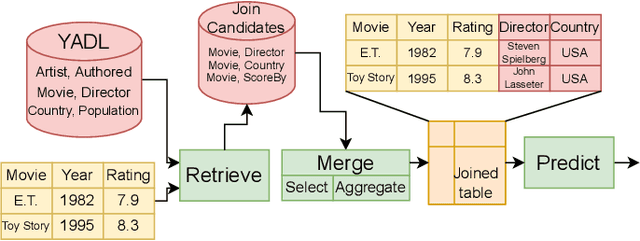
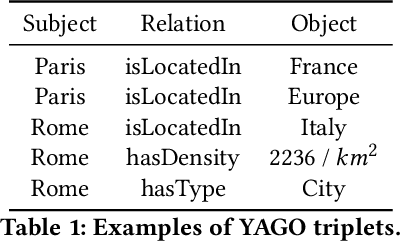

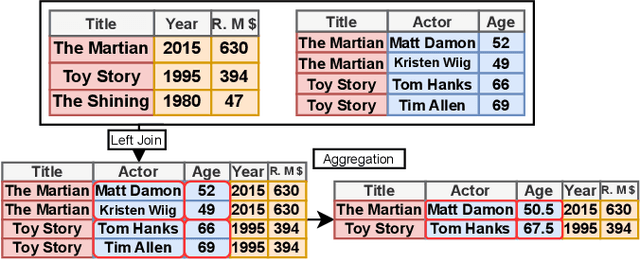
Abstract:We present an in-depth analysis of data discovery in data lakes, focusing on table augmentation for given machine learning tasks. We analyze alternative methods used in the three main steps: retrieving joinable tables, merging information, and predicting with the resultant table. As data lakes, the paper uses YADL (Yet Another Data Lake) -- a novel dataset we developed as a tool for benchmarking this data discovery task -- and Open Data US, a well-referenced real data lake. Through systematic exploration on both lakes, our study outlines the importance of accurately retrieving join candidates and the efficiency of simple merging methods. We report new insights on the benefits of existing solutions and on their limitations, aiming at guiding future research in this space.
Local Embeddings for Relational Data Integration
Sep 03, 2019

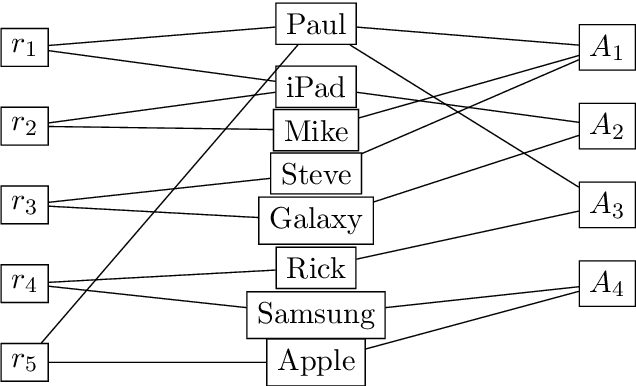
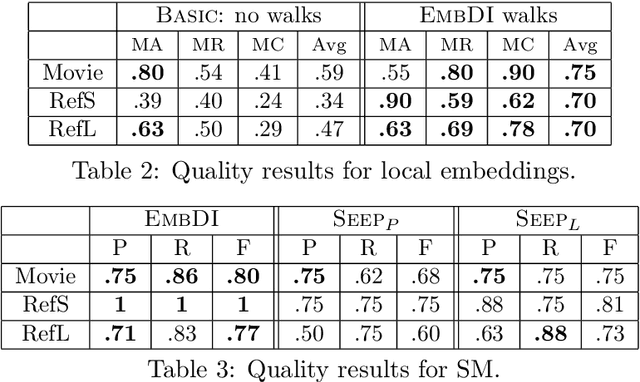
Abstract:Integrating information from heterogeneous data sources is one of the fundamental problems facing any enterprise. Recently, it has been shown that deep learning based techniques such as embeddings are a promising approach for data integration problems. Prior efforts directly use pre-trained embeddings or simplistically adapt techniques from natural language processing to obtain relational embeddings. In this work, we propose algorithms for obtaining local embeddings that are effective for data integration tasks on relational data. We make three major contributions. First, we describe a compact graph-based representation that allows the specification of a rich set of relationships inherent in relational world. Second, we propose how to derive sentences from such graph that effectively describe the similarity across elements (tokens, attributes, rows) across the two datasets. The embeddings are learned based on such sentences. Finally, we propose a diverse collection of criteria to evaluate relational embeddings and perform extensive set of experiments validating them. Our experiments show that our system, EmbDI, produces meaningful results for data integration tasks and our embeddings improve the result quality for existing state of the art methods.
 Add to Chrome
Add to Chrome Add to Firefox
Add to Firefox Add to Edge
Add to Edge